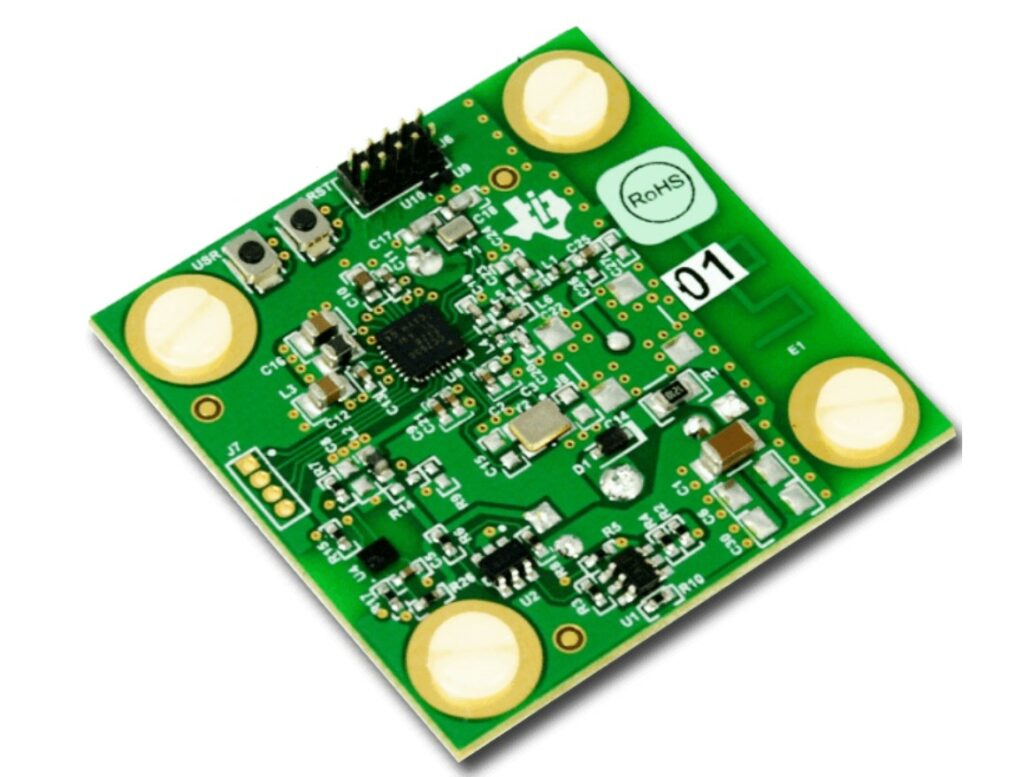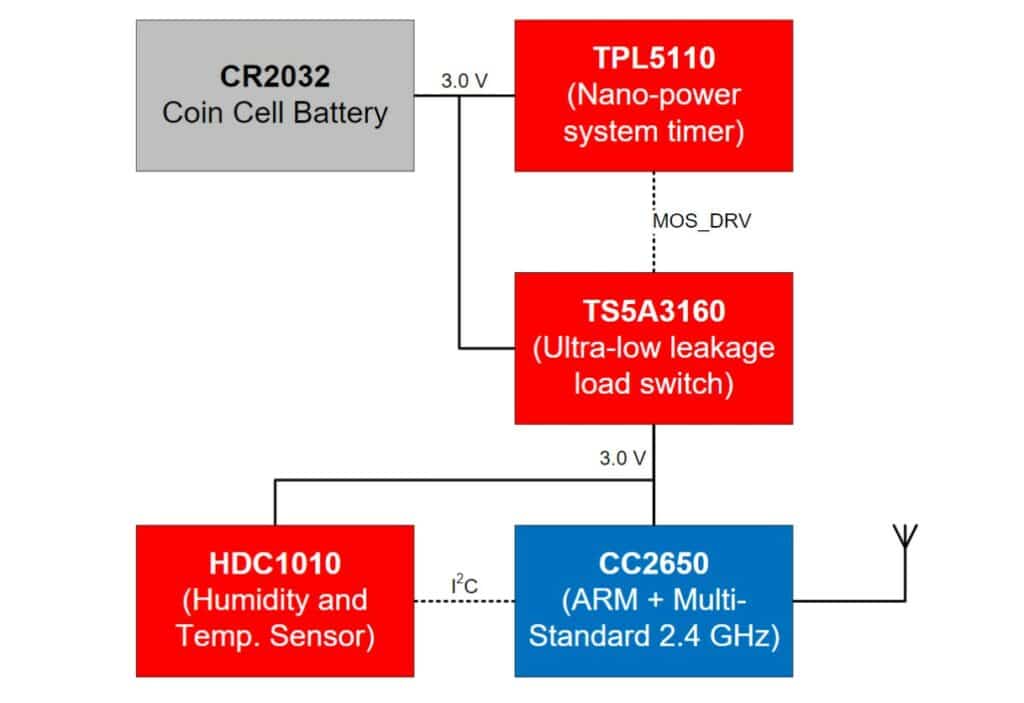Reference design for humidity and temperature sensor nodes that can operate in star networks and provide a coin cell battery life of over ten years.

Internet of Things (IoT) and building automation systems require more wireless sensor end nodes, but their power constraint is a major obstacle. The end nodes are battery-powered and need replacement after several months to years, leading to costly periodic manual replacements. To resolve this issue, Texas Instruments (TI) has launched a reference design for humidity and temperature sensor nodes that can operate in star networks and provide a coin cell battery life of more than 10 years. The reference design employs a nano-power system timer, SimpleLink ultra-low power wireless microcontroller (MCU) platform, and humidity sensing technologies to showcase an ultra-low power approach to duty-cycle sensor end nodes, resulting in a battery life of over 10 years with a CR2032 lithium-ion coin-cell battery. The design is suitable for various industrial and IoT applications.
The reference design is based on the ultra-low power wireless MCU with ARM Cortex-M4 processor CC2650 to which the sensor information is transmitted for processing. The wireless MCU targets multiple standards, including Bluetooth Smart, Zonal Intercommunication Global-standard (ZigBee), IPv6 over Low-power Wireless Personal Area Networks (6LoWPAN), and ZigBee Radio Frequency for Consumer Electronics (RF4CE) remote control applications. An integrated temperature sensor and digital humidity sensor are added to the design to demonstrate the ultra-low power duty-cycling power scheme. The design achieves long battery life using a low-power nano-system timer, replacing the microcontroller’s internal timer. TPL5110 is a nano-power system timer that can wake an MCU from sleep mode with a pin interrupt or turn off power to the system. In addition, the design uses a low-leakage analog switch to turn off the system, and the switch’s off-state leakage is a crucial factor that can impact the system’s battery life. The power source for the design is CR2032 lithium-ion coin cell.

The reference design features a radio transmission range of 430 feet and an estimated battery life of 10.58 years. The design operates at an input voltage of 3.0V nominal voltage. The coin cell battery limits the system’s operating temperature and ranges from –30°C to 60°C. The design comes with an extremely low off-state current of 183nA for 59.97 seconds and ultra-low on-state current of 4.04mA for 30ms due to a low active processor and radio transmit currents. The chip is designed with 2% relative humidity accuracy and ±0.2°C temperature accuracy. The reference design is for star networks, where sensor end nodes connect directly to a central receiver for data processing and cloud connection. It’s unsuitable for smart mesh networks as the wireless MCU is completely powered off and cannot retain its state or control its wake-up time.
This reference design has been tested by TI. It comes with a Bill of Material (BOM), schematics, Gerber file, Printed circuit board (PCB) layout, computer-aided design/ computer-aided engineering (CAD/CAE) symbols, Assembly drawing, Schematic, etc. You can find additional data about the reference design on the company’s website. To read more about this reference design, click here.






